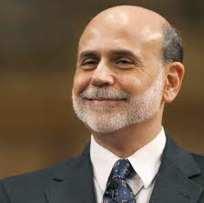The federal reserve has decided to “taper” off the stimulus funding. Beginning in January the Reserve will reduce the amount of bonds they have been buying from $85 billion to $75 billion each month.
 The Federal Reserve statement mentioned that the labor market conditions and the employment market could be improved with less purchase of assets each month.
The Federal Reserve statement mentioned that the labor market conditions and the employment market could be improved with less purchase of assets each month.
Bonds that will be cut back on will be in two areas. Treasuries will receive less purchases per month (approximately $5 billion) and mortgage-backed securities will also see a $5 billion dip.
How did all of this happen?
It started with the Federal Reserve cutting their key interest rate in 2008 to nearly zero. From there the program entered what is called “quantitative easing” also known as QE. QE involved the Fed buying assets such as treasuries and mortgage-backed securities with hopes of lowering the interest rates for the long term.
QE was broken up into three terms which are now known as QE1, QE2, and QE3. Of these three stages QE1 and QE2 had specific end-dates of which to judge them by. QE3 does not have such a date but the Reserve says they are looking for “substantial” improvements for the stimulus and the job market.
The term “substantial” has been misrepresented by many members of the Federal Reserve such as Chairman Ben Bernanke. Bernanke explained that he expected tapering to begin around towards the end of this year and stated it would stop buying bonds sometime in 2014.
Bernanke was also hoping that once the unemployment rate dropped to 7% that tapering would begin. When it hit 7% last month there was no action however and now that tapering seems to be happening at an inopportune time.
Eric Rosengren, a Fed member, was not in favor of the tapering citing his belief that unemployment was still too high.
However the tapering effects the future is unknown and frankly up in the air. Bernanke will not be at the helm much longer to see it through as his 8 year term ends on January 31. Janet Yellen was nominated by President Obama in October and will assume Bernanke’s old position beginning in February.